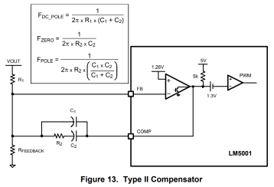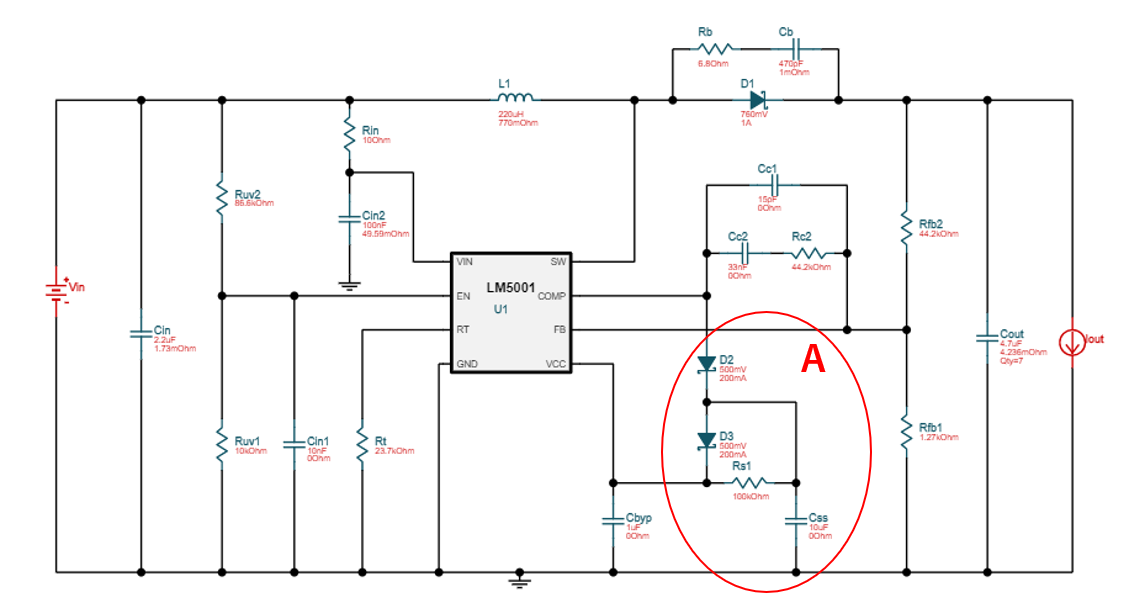Dear all,
I would like to ask about LM5001
When comparing the circuit in the data sheet Figure 20 and the circuit in WEBENCH, in the circuit of WEBENCH, the part in the red circle is additionally attached to the circuit in the data sheet.
(I have a request from our customers to configure as few peripheral components as possible.)

① If the EN pin is not used, are the blue circled parts (Rcv1, Rcv2, Cin1) unnecessary?
(If the EN pin is not used, is it okay to leave it open?)
②The description of Rb and Cb arranged in parallel with D1 could not be confirmed in the data sheet. Is it necessary to use the LM5001?
(If you don't mind, please tell me the roles of Rb and Cb.)
③Cc1 is not included in the data sheet Figure20. Does the following loop compensation work without Cc1?
(If C1 does not exist, I think that Cc1 is necessary because Fpole of the calculation in the following figure cannot be derived)

④ If it is not necessary to set the soft start, are the parts (D2, D3, Rs1, Css) in red circle A shown in the data sheet Figure.20 unnecessary?
Also, if you need to set soft start, what kind of problem is there when you use only Css without D2, D3 and Rs1?
* By the way, customers are considering using under the following conditions.
Vin = 18V-30V
Vout = 40V
Iout = 0.25A
Best Regards,
Y.Ottey


